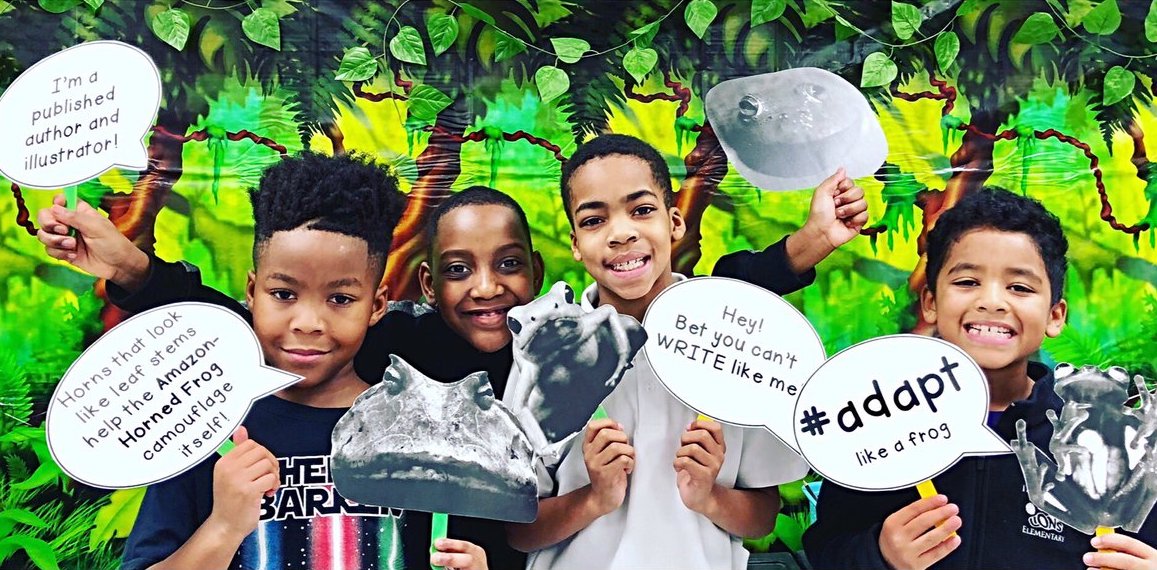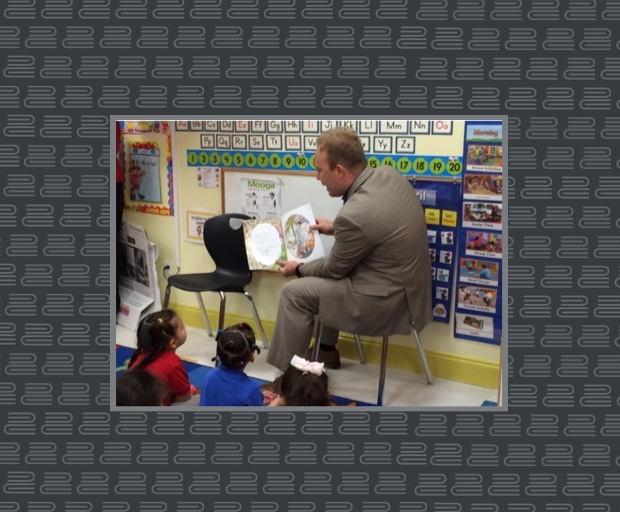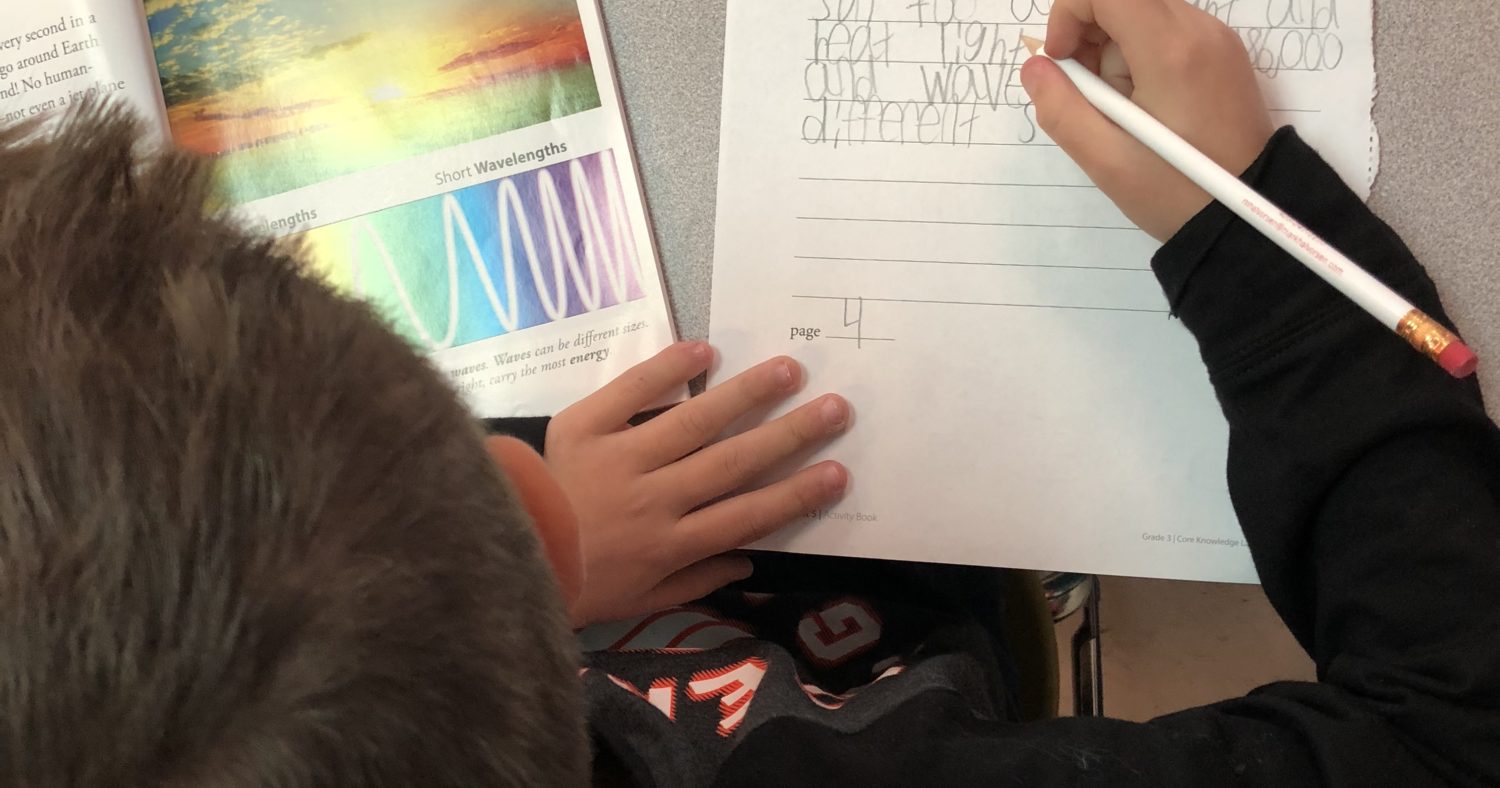I’m incredibly inspired by this moment. Right now, I’m seeing a growing interest in reading instruction, and judging from the chatter in social media, it seems like districts across the country are beginning to have the conversation that we have been having in my district: How to we improve our reading and math instruction system-wide, to align with research-based practice?
In Tennessee, we have been a part of a local Professional Learning Community collaborating around those problems of practice, the TN SCORE network. At convenings, and in 1:1 conversations, we have been working together, and I have learned so much from my peers in doing this work.
So it’s incredibly inspiring to me to work with Jared, Brian, Nakia, and Jana Beth to take this collaboration to a national level. When I read Jared’s words in The urgency I feel around instruction – and why I look to curriculum, I’m reminded all over that we are on exactly the same journey, facing the same challenges, using similar approaches to address these issues, and seeing similar positive outcomes. I can’t wait to connect with others doing this work.
Reader, I hope you will join our PLN.
I began blogging, too, so that I can share insights from our district’s work. Here I’m sharing my first blog, on my ‘aha’ moments around reading instruction and our journey to elevate instruction with curriculum.
– Robin McClellan
Mission Field
I think of my work in education as a mission field. Called to teach when I was a child, it has always been my labor of love to fight for the underdog: the Davids among Goliaths.
Yet as a product of the whole language era in my own post-secondary education, I spent the first 21 years of my career as both teacher and principal not knowing what I didn’t know. I created, planned, taught, and monitored with the very best of intentions and with the learner at the center of every action and decision. I loved my students, provided for their basic needs, encouraged and supported them, and worked tirelessly to inspire hope for a future.
Throughout the first ten years as school and later district-level leader, I analyzed district, school, teacher, and student achievement and growth data. The disconnect between ELA achievement and growth data and my own classroom walkthroughs and observations was unsettling; I fully believed in the power and potential of our teachers and leaders, yet student growth was stagnant and achievement hovered around the state’s performance: 30% of our 3-8 students were demonstrating mastery of grade-level standards on TNReady year after year. I lost sleep over it.
What was the issue? What was the problem? Why weren’t our children making progress and showing gains? I learned about literacy instruction in 1993 and whole language was the ticket, right? Oh, well then I learned about phonics instruction as a classroom teacher and that was the ticket, right? And then balanced literacy and then…and then…
My epiphany came in 2016 like a tornado rather than a gentle breeze when I was taught –through collaboration with SCORE and TNTP – that we must build students’ background knowledge while explicitly teaching foundational skills. Recht and Leslie (1988) rocked my world in their groundbreaking study; if you don’t know this research, this short video is a great primer.
I realized, with great dismay, that our work didn’t align with the research on how kids learn to read.
It also became clear that our teachers were trying to build the house – and teach children how to read and understand what they are reading – on shifting sand (weak curriculum that didn’t build background knowledge) rather than on rock (strong curriculum)…the footers hadn’t been poured.
Enter high quality curriculum.
In my district, we have seen powerful outcomes by bringing in new curriculum that is designed around the aforementioned research. Excellent curriculum has given us the instructional foundation we needed, and I’ll share more results and details soon.
It has been a journey: 3 years of learning about the vital importance of instructional materials, bringing teachers and leaders to the table to select a strong literacy curriculum, and managing the organizational shifts in thinking and practice, with the support of strategy leads. We have witnessed first-hand the ripple of impact, and it has changed us as educators, my friends. We now know that all kids can reach a higher bar, because we have seen what happens in our classrooms when we expect all kids to achieve AND give teachers the right instructional tools.
Looking back, I now realize that I did not hold students to high expectations because I did not know, nor could I fathom, what young children were capable of learning, producing, and accomplishing. I wasn’t consciously lowering expectations, but I did not “own” the fact ALL students (not SOME) could and would rise to shatter glass ceilings that were seemingly impenetrable due to circumstances beyond their realm of control.
You can talk endlessly about problems with education policy, the proverbial pendulum, lack of parent involvement, generational and situational poverty, and apathy. Those problems are real, but they can sometimes feel paralysing. Now, I see solutions that empower teachers and propel kids, and that inspires me.
I want to share the power of elevated expectations, structural strategy, collaboration, and the immeasurable value of leveraging the strengths, talents, and voices of teachers and leaders. Within my district, and hopefully beyond, my ultimate goals are to:
- propel educational equity for all children through advocacy and awareness of the importance of high quality curricula.
- equip teachers with strong materials that enable them to TEACH rather than GATHER and CREATE (as they have been suffering from curriculum development exhaustion).
- empower teachers to become action researchers who are willing to grapple with the “messiness” of change.
- analyze student work, celebrate growth, and capture the “stories” of this journey.
- highlight and honor the impact of the work of our teachers and leaders.
It’s time to come together as we move toward the adoption of English Language Arts curriculum within the next two years. These curriculum selections have high stakes for our kids: In a review by the Johns Hopkins Institute for Education Policy, Dr. David Steiner, Executive Director, noted, “The overarching conclusions from the Johns Hopkins’ review are that curriculum is deeply important, that a teacher’s or district’s choice of curriculum can substantially impact student learning, and that—as a result—the paucity of evidence upon which sound instructional, purchasing, and policy decisions can be made is a matter of deep concern and urgent need.”
These curriculum selections also come at a time when Sue Pimentel describes a “curriculum renaissance,” with new options that are meaningfully different from the curricula from traditional publishers. They support foundational skill development and knowledge acquisition by our youngest learners. Yet they are unknown to most districts. So, this must be a time of professional learning for ELA leaders.
Dr. E.D. Hirsch asserted, “the right to parity of knowledge among young pupils will come to be understood as a civil right.” I am ready to fight that fight for kids. Who’s with me?
If you’re with me: I’d like you to join a community that’s forming around high-quality curriculum use, Curriculum Matters. My work with high-quality curriculum has been elevated and supported by collaboration with other leaders in the state, like Jared Myracle of Jackson-Madison County Schools. Now, Jared and I – and other district leaders with whom we’ve been speaking – are intrigued by the potential of a PLN for curriculum work.
If you think that a curriculum PLN could elevate your work, too, please:
I originally published this piece on my blog, which you can follow here. I serve as the Elementary Supervisor in Sullivan County Schools in Tennessee.
Curriculum Notes
If you’d like to speak with me about the specific high-quality curricula used in my district, they are:
K–3 ELA: Core Knowledge Language Arts (all-green on EdReports, Tier 1 on Louisiana Believes)
4th ELA: Core Knowledge Language Arts pilots in six schools.
5th ELA: Core Knowledge Language Arts pilot in one school.




